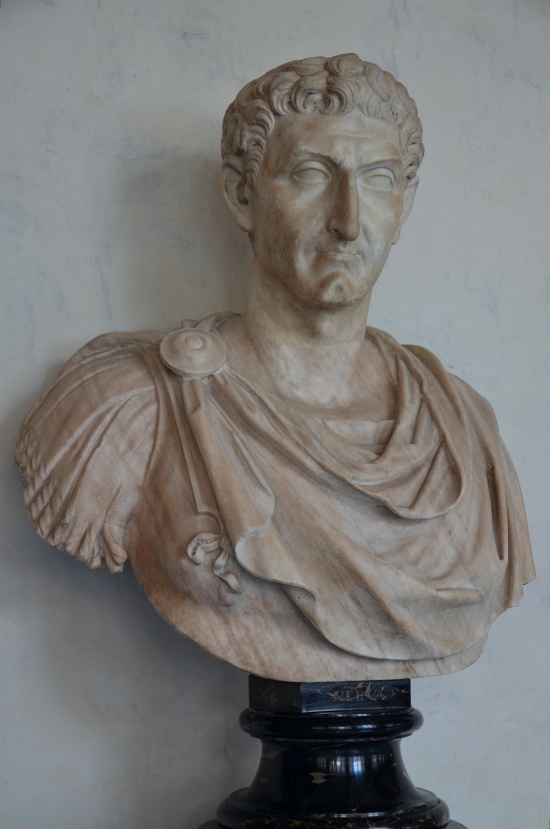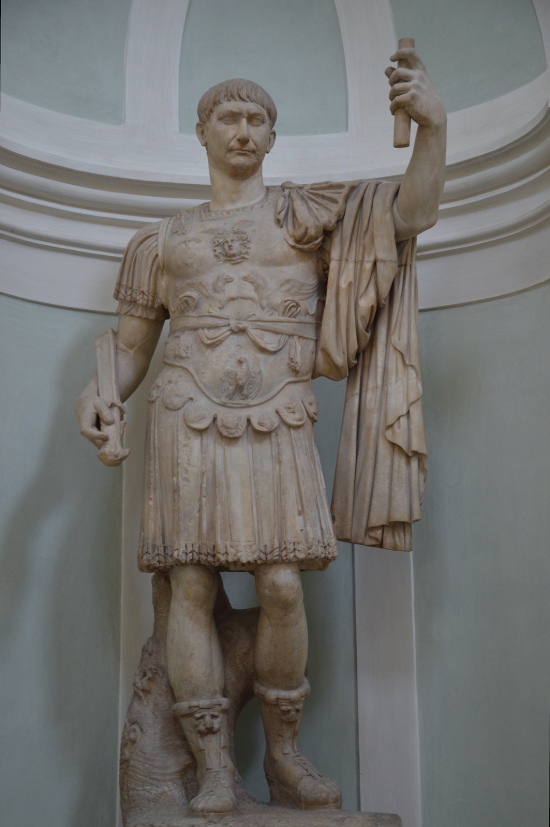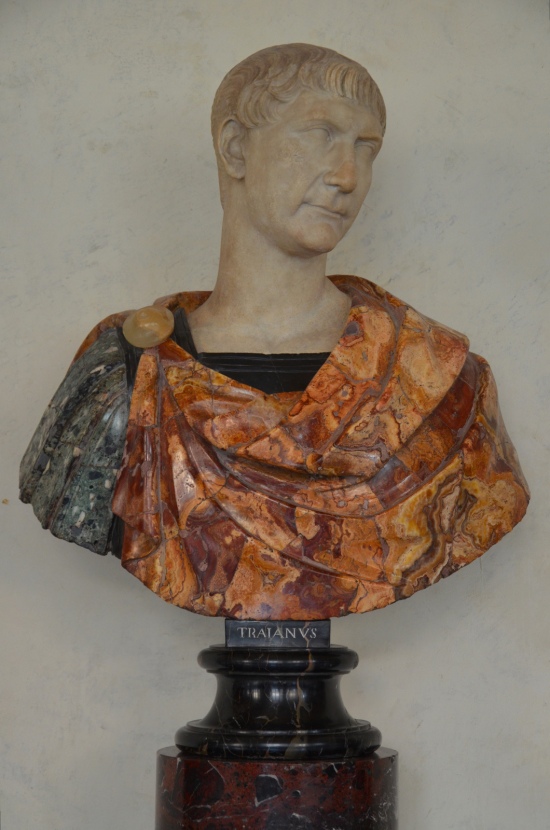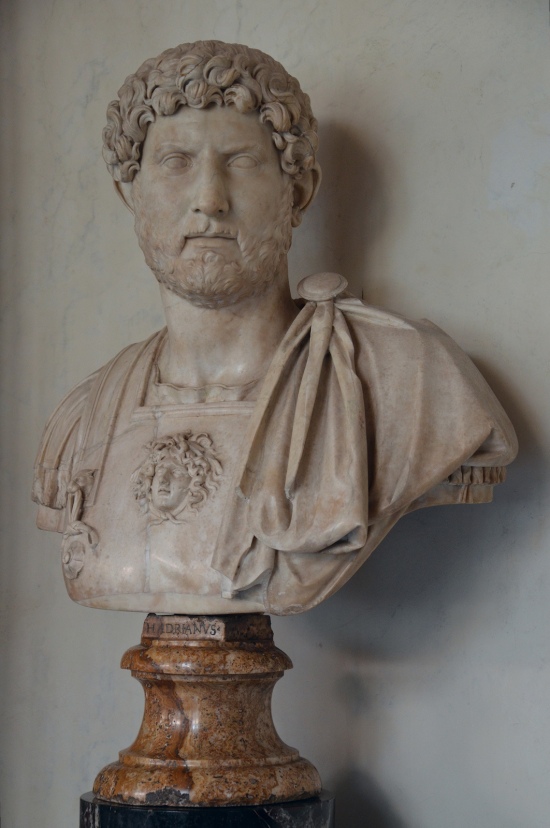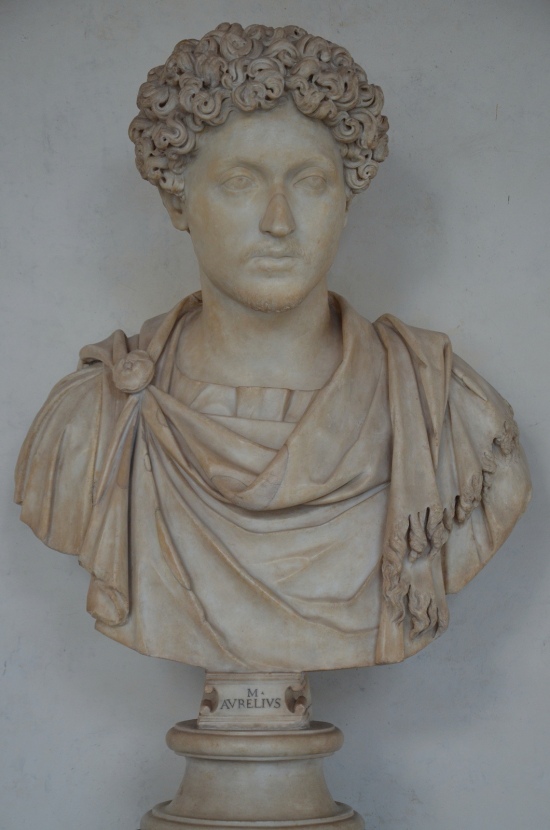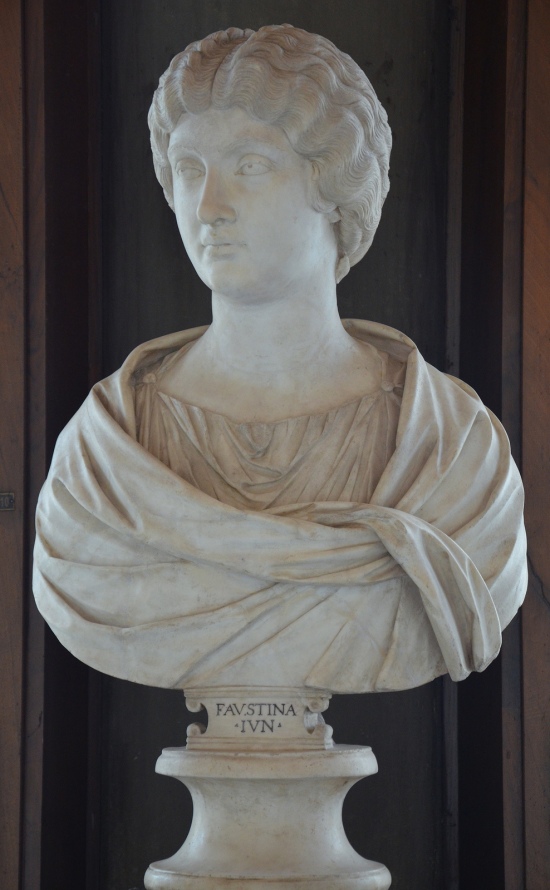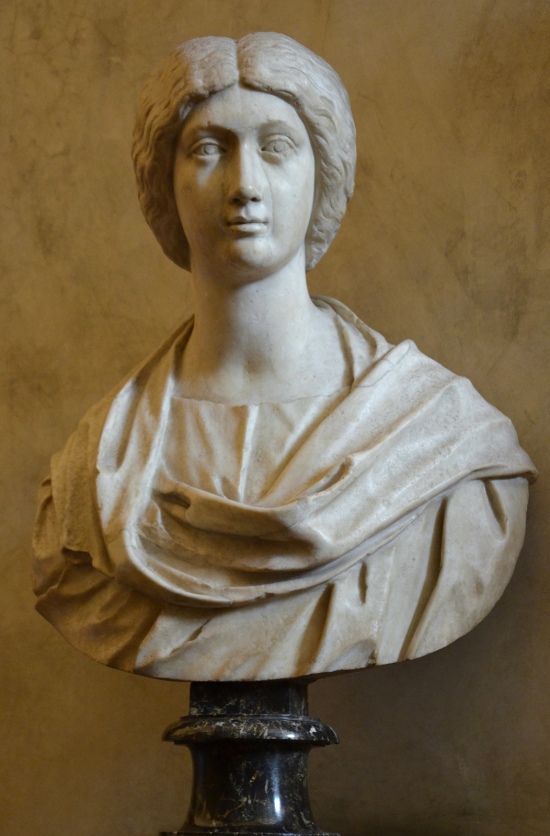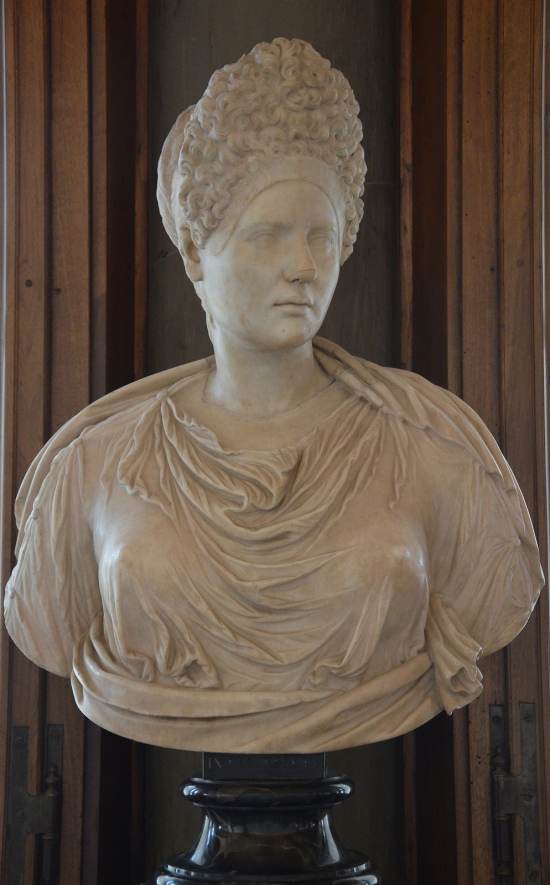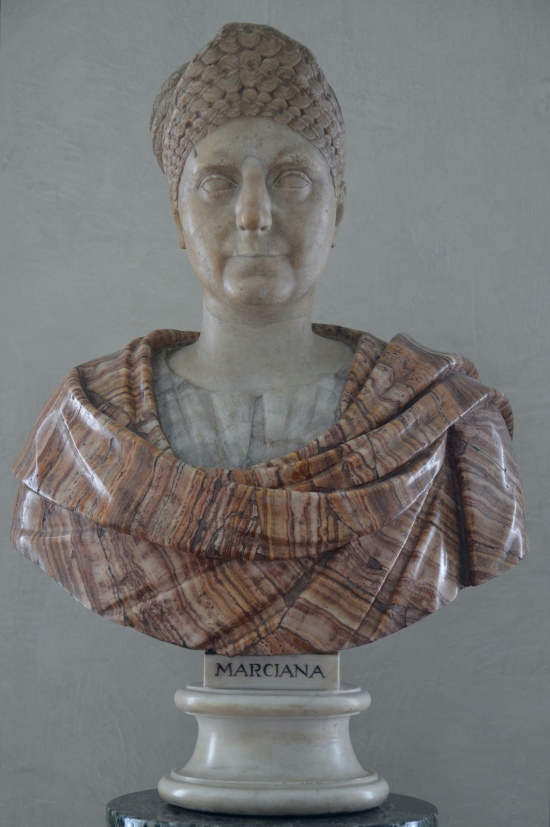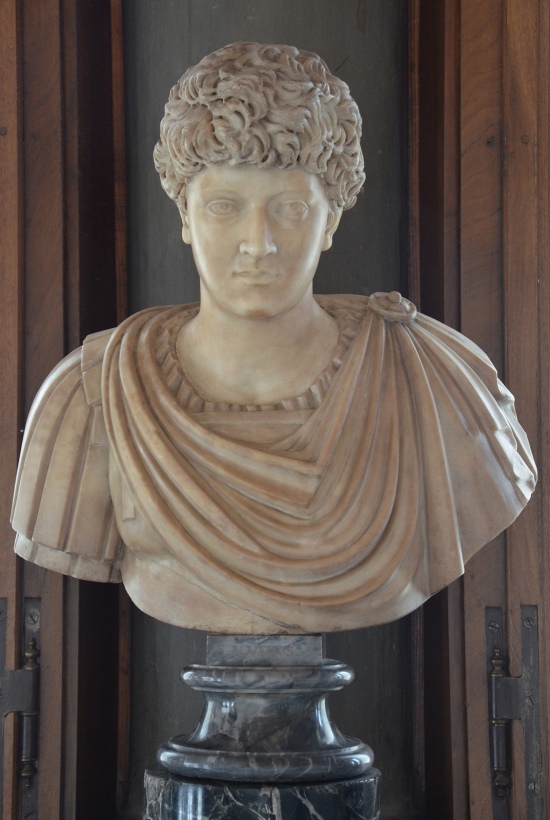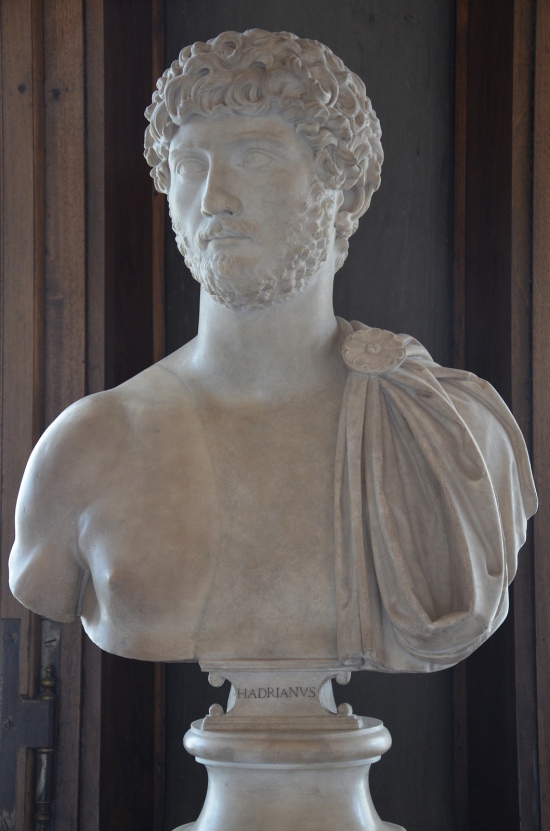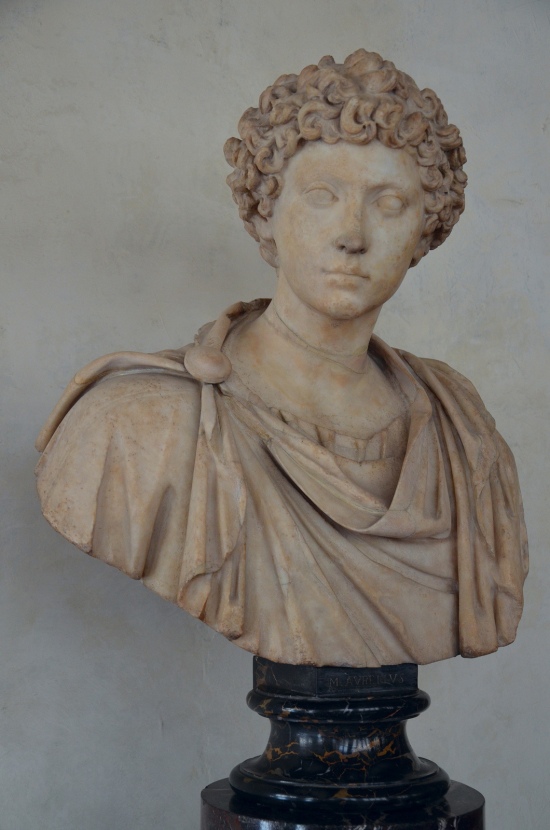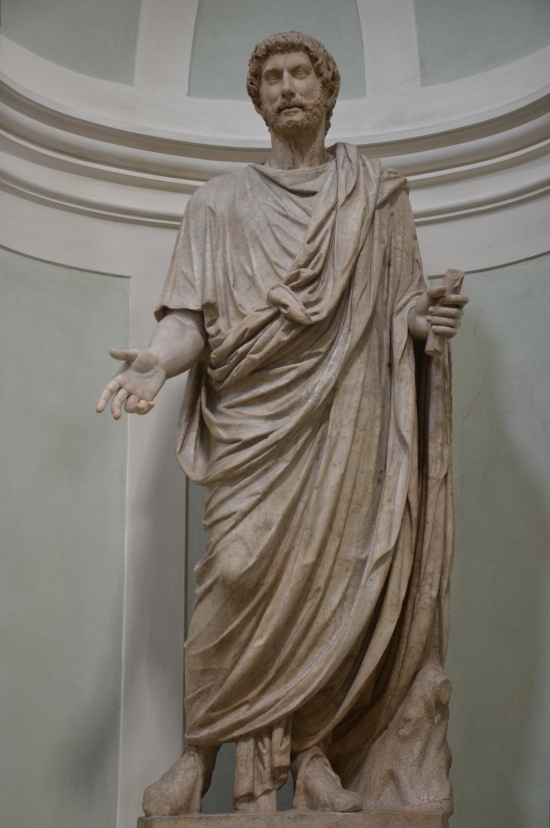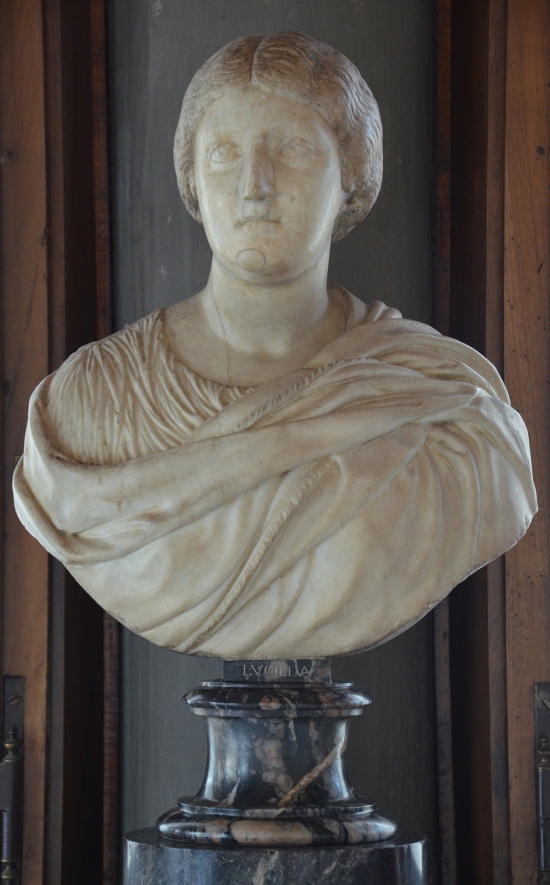The Galleria degli Uffizi in Florence is one of the oldest and most famous art museums in the world. In addition to Renaissance masterpieces including works from Botticelli, Michelangelo and Leonardo da Vinci, the Uffizi houses one of the world’s most important collections of ancient Roman and Greek statues. The Medicis’ interest in ancient art started with the founder of the family Cosimo I de’ Medici (1519-1574) and grew over nearly four decades. The antiquities were stored and displayed in several rooms in Palazzo Vecchio and Palazzo Pitti where they could be admired by the visitors to the court. The antiquities were later transferred to the Uffizi.
Most of the ancient statues and busts are displayed on the u-shaped second floor of the museum. The wide corridors are filled with numerous portraits of the members of the different imperial dynasties including those of the Nerva-Antonine dynasty.
Nerva (ruled 96 – 98 A.D.)
Trajan (ruled 98 – 117 A.D.)
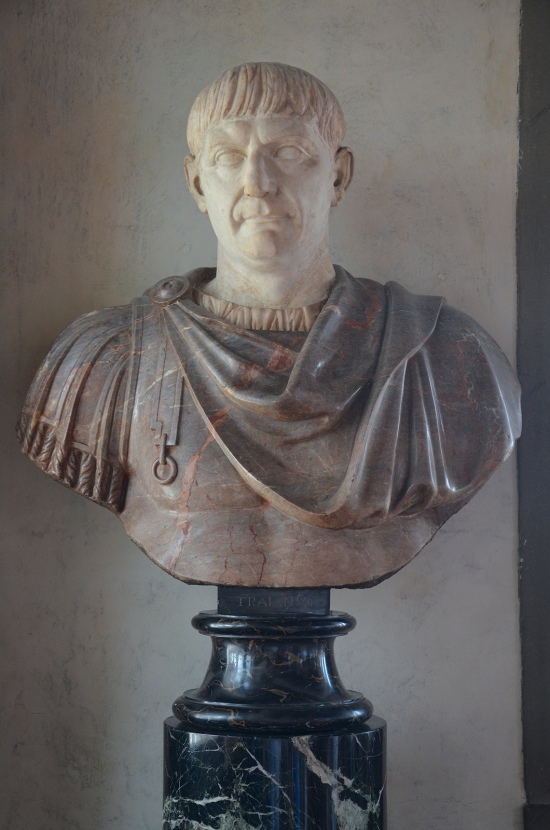
Bust with the head of Trajan, ca. 105 AD, the head is inserted in a modern bust of red marble, Galleria degli Uffizi, Florence
Ulpia Marciana, beloved elder sister of Trajan
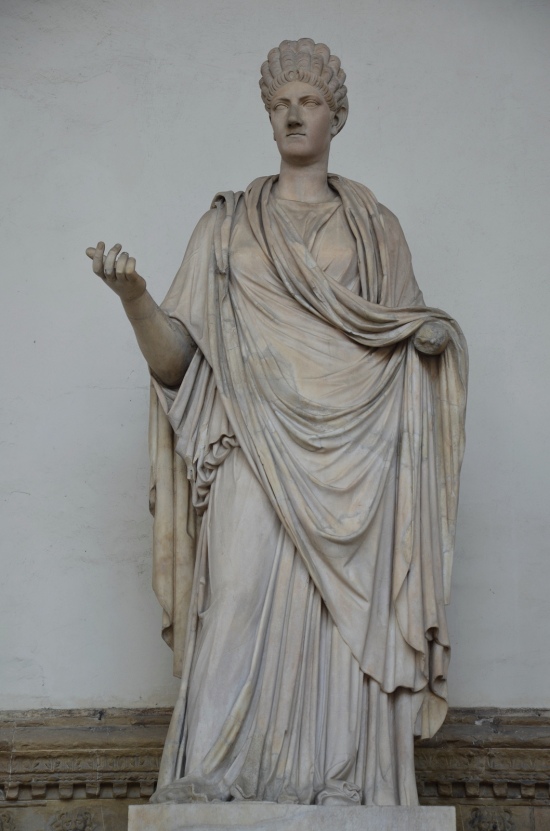
Female statue with a portrait of Ulpia Marciana, 110-120 AD, with modern restorations, Loggia dei Lanzi, Florence
Salonina Matidia, niece of Trajan and mother-in-law of Hadrian
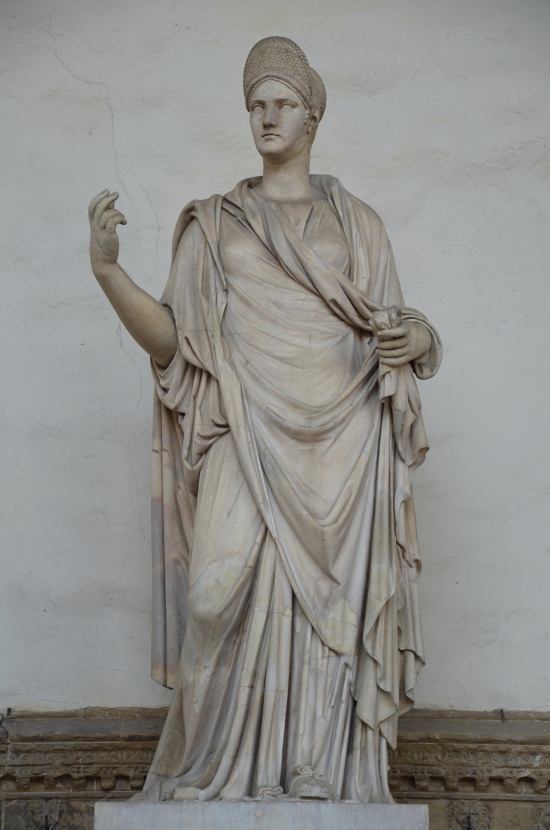
Statue of a Roman lady, so-called Sabina, with a portrait of Matidia, 2nd century AD with modern restorations, Loggia dei Lanzi, Florence
Hadrian (ruled 117 – 138 A.D.)
Antinous, favorite of Hadrian
Lucius Aelius Caesar, intended successor of Hadrian
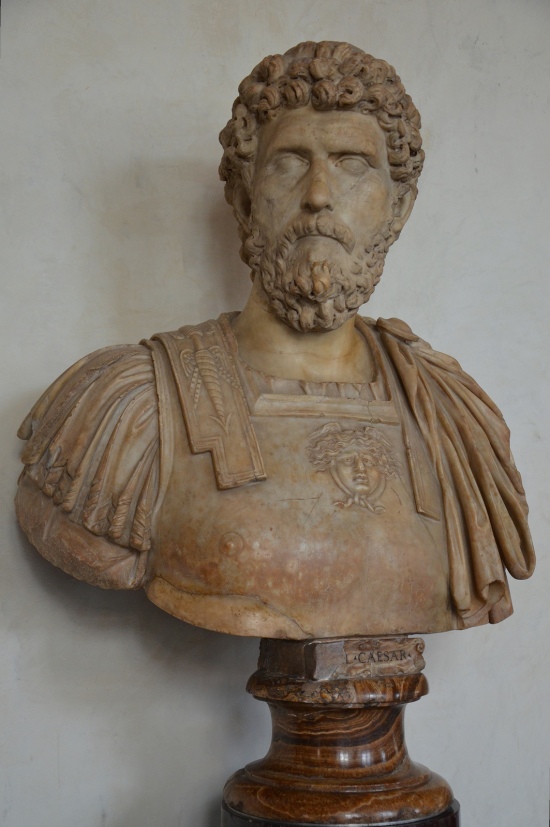
Lucius Aelius Caesar, intended successor of Hadrian who died prematurely, 2nd century AD, Galleria degli Uffizi, Florence
Antoninus Pius (ruled 138 – 161 A.D.)

Marble bust with the head of Antoninus Pius, middle of 2nd century AD, Galleria degli Uffizi, Florence
Empress Faustina the Elder, wife of Antoninus Pius
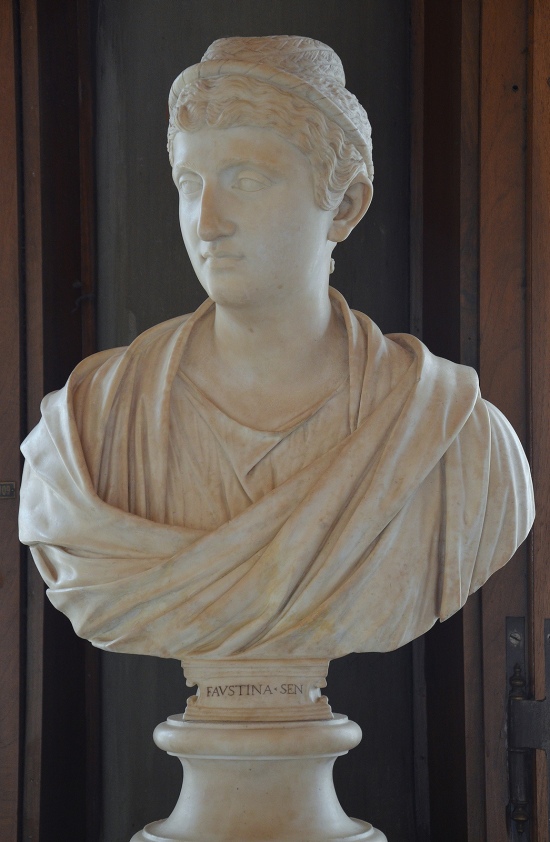
Bust of Empress Faustina the Elder, wife of Antoninus Pius, circa 141 AD, Galleria degli Uffizi, Florence
Marcus Aurelius (ruled 161 – 180 A.D.)
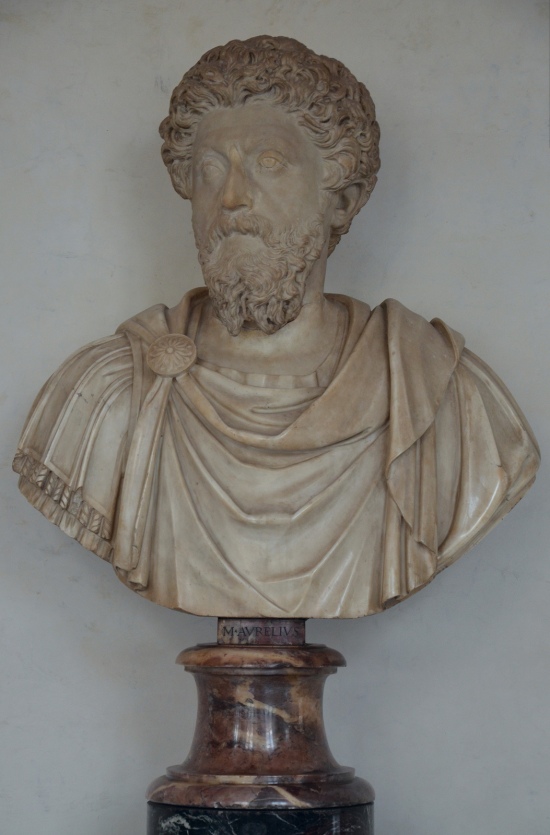
Marble bust with the head of Marcus Aurelius, end of 2nd century AD, Galleria degli Uffizi, Florence
Empress Faustina the Younger, wife of Marcus Aurelius
Lucius Verus (ruled 161 – 169 A.D.)
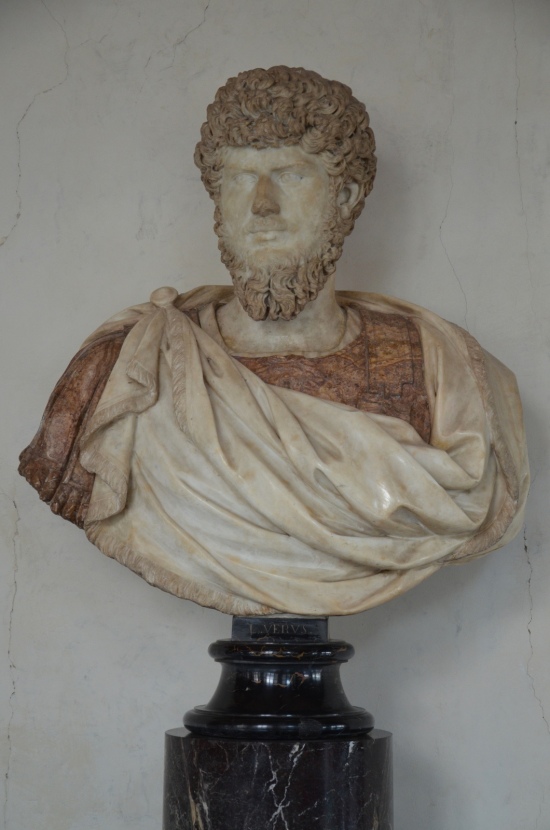
Modern marble bust with the head of Lucius Verus, 2nd half of 2nd century AD, Galleria degli Uffizi, Florence
Empress Crispina, wife of Commodus
In addition to the members of the Nerva-Antonine dynasty, the Uffizi houses a number of portraits of unknown citizens from the same era. Some of these portraits were incorrectly attributed to members of the Nerva-Antonine dynasty during the Renaissance but the original inscriptions have remained.
Private portraiture of unknown citizen from the Nerva-Antonine era
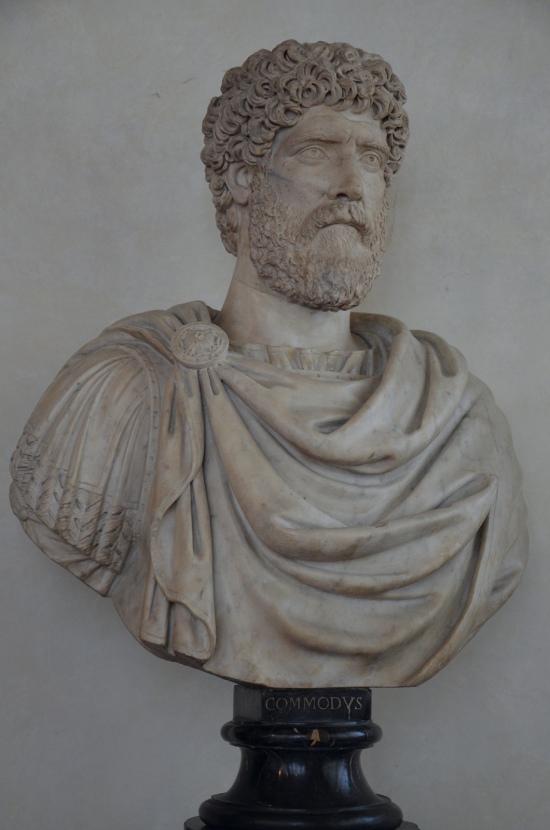
Private portrait of a citizen of the late Antonine period thought to be Commodus, 160 – 180 AD. Galleria degli Uffizi, Florence
Many more portraits of the Nerva-Antonines dynasty can be viewed from my image collection on Flickr.
Related posts:
- The Nerva-Antonines in Cologne
- The Nerva-Antonines in Palazzo Massimo alle Terme, Rome
- The Nerva-Antonines in Copenhagen
